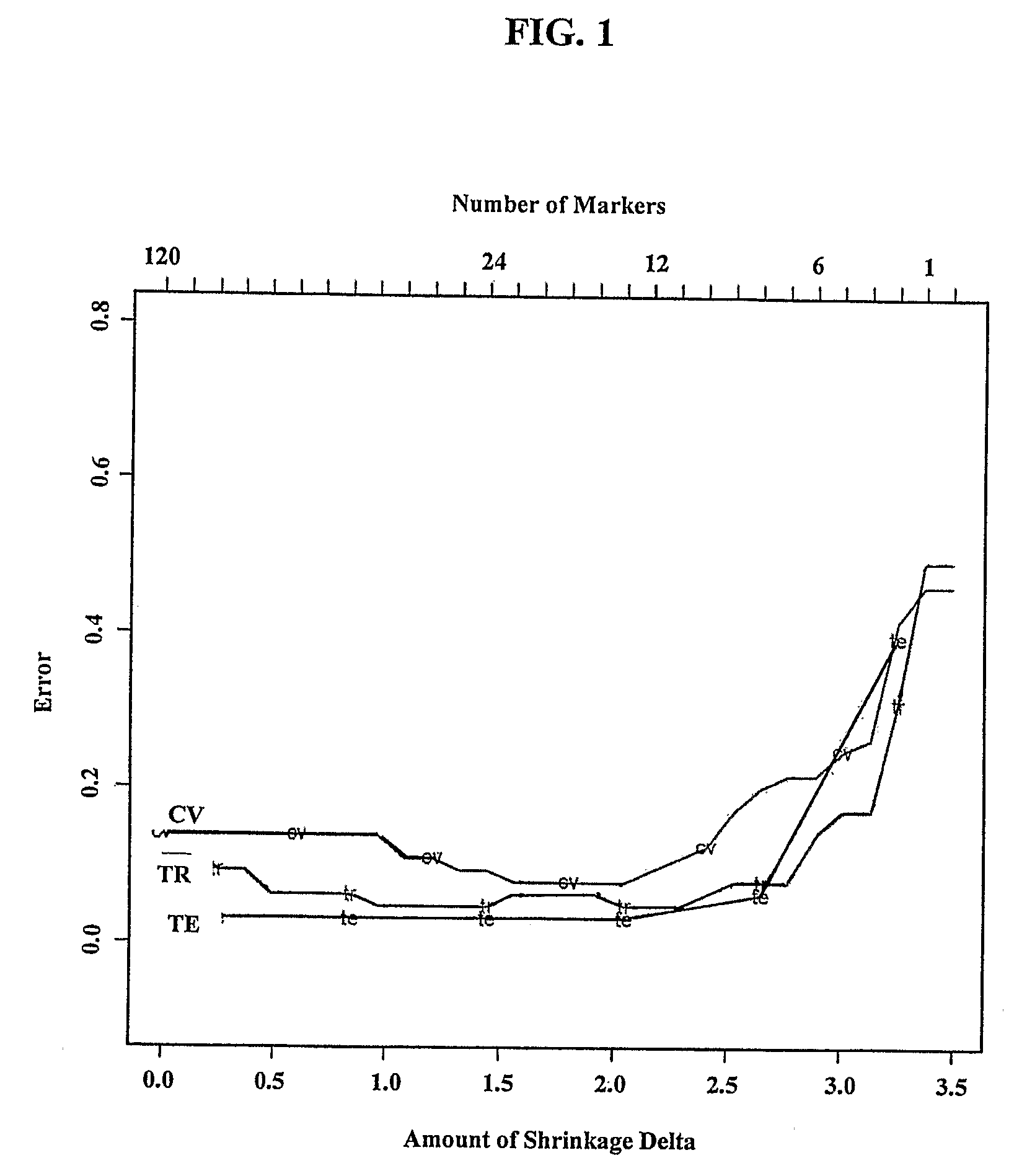Methods of treating alzheimer's disease
a technology of alzheimer's disease and treatment methods, applied in the field of treatment and prevention of alzheimer's disease, can solve problems such as progressive dementia, amnesia, and disturbances in emotional behavior, and achieve the effect of preventing or delaying the development of alzheimer's diseas
- Summary
- Abstract
- Description
- Claims
- Application Information
AI Technical Summary
Benefits of technology
Problems solved by technology
Method used
Image
Examples
example 1
Identification of Predictive Biomarkers
[0181]Using antibody-based protein microarrays, plasma protein levels for 120 cytokines, chemokines, growth factors, soluble receptors and hormone-like proteins were determined in biological fluid samples obtained from individuals diagnosed with Alzheimer's disease and control individuals as previously described in U.S. patent application publication No. 2005 / 0221348. As described in U.S. patent application publication No. 2005 / 0221348, biological fluid samples include peripheral biological fluid samples, blood, plasma and serum. The differences in protein levels were analyzed using a statistical algorithm that identifies a minimal set of markers that can discriminate and predict a certain “class” (R. Tibshirani et al. (2002) PNAS 99:6567-6572). With this method the data points are scaled to have a mean of 0 and a standard deviation of 1. The expression values are relative and are not absolute concentrations. The Tibhsirani, supra, method was u...
example 2
Analysis of Alzheimer's Disease Samples
[0182]The biomarkers identified in the PAM analysis described in Example 1 and described herein were used in an unsupervised clustering analysis with the original 98 samples. The sample distribution among the AD and NDC samples is detailed in Table 5.
TABLE 5SampleAutopsyMeanMMSEAD StageNumberConfirmedMMSERangeQuestionable or8626.526-28ProbableMild1942220-24Moderate17714.911-19Severe43.81-5Total4818.8 1-28Non-Demented503028-30Controls
[0183]Using the biomarkers IL-1α, PDGF-BB, TNF-α, M-CSF, G-CSF, GNDF, eotaxin 2, MCP-3, PARC, AgRP, MSP-α, and BTC, the 98 samples were grouped resulting in 48 of 50 (96%) non-demented control samples clustered correctly and 45 of 48 (93.75%) Alzheimer's disease samples clustered correctly.
[0184]While the foregoing invention has been described by way of illustration and example for purposes of clarity of understanding, it will be apparent to one of skill in the art that various changes and modifications may be pract...
PUM
| Property | Measurement | Unit |
|---|---|---|
| Fraction | aaaaa | aaaaa |
| Fraction | aaaaa | aaaaa |
| Fraction | aaaaa | aaaaa |
Abstract
Description
Claims
Application Information
 Login to View More
Login to View More - R&D
- Intellectual Property
- Life Sciences
- Materials
- Tech Scout
- Unparalleled Data Quality
- Higher Quality Content
- 60% Fewer Hallucinations
Browse by: Latest US Patents, China's latest patents, Technical Efficacy Thesaurus, Application Domain, Technology Topic, Popular Technical Reports.
© 2025 PatSnap. All rights reserved.Legal|Privacy policy|Modern Slavery Act Transparency Statement|Sitemap|About US| Contact US: help@patsnap.com


